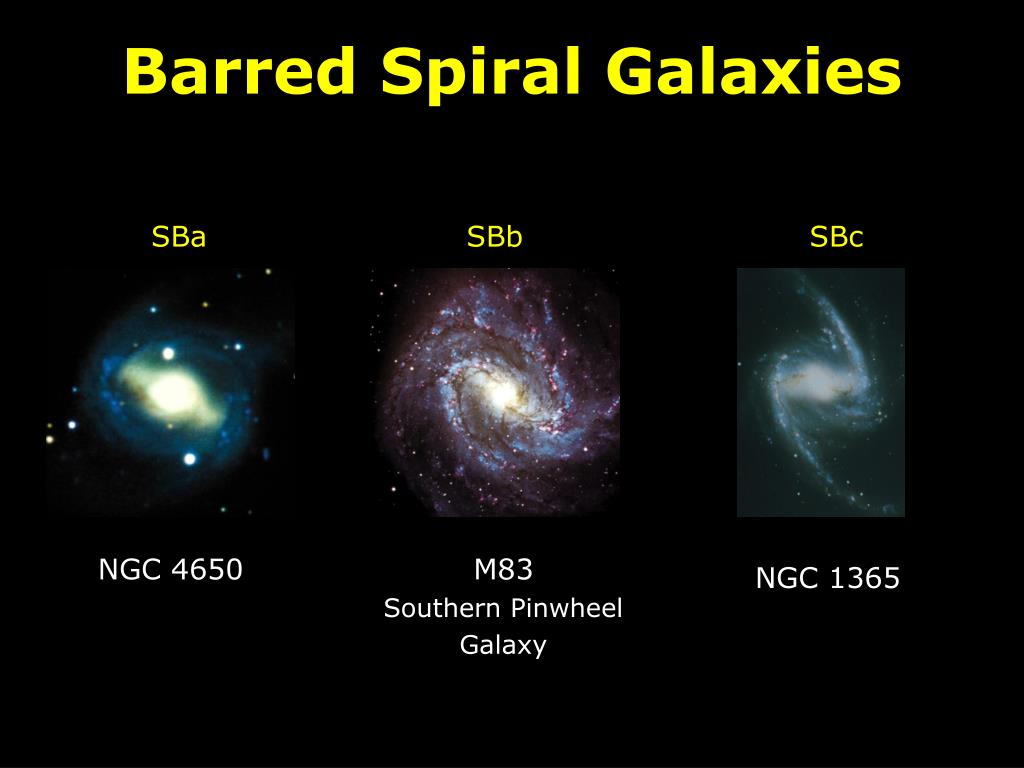

There are many lines of evidence for the existence of black holes in spiral galaxy centers, including the presence of active nuclei in some spiral galaxies, and dynamical measurements that find large compact central masses in galaxies such as Messier 106. In our own galaxy, for instance, the object called Sagittarius A* is believed to be a supermassive black hole. Many bulges are thought to host a supermassive black hole at their centers. Some bulges have similar properties to those of elliptical galaxies (scaled down to lower mass and luminosity) others simply appear as higher density centers of disks, with properties similar to disk galaxies. In contrast, the bulges of Sc and SBc galaxies are much smaller and are composed of young, blue Population I stars.

Further, the bulge of Sa and SBa galaxies tends to be large. Using the Hubble classification, the bulge of Sa galaxies is usually composed of Population II stars, which are old, red stars with low metal content. They are mostly found in low-density regions and are rare in the centers of galaxy clusters. Together with irregular galaxies, spiral galaxies make up approximately 60% of galaxies in today's universe. The most convincing evidence for the stars forming a bar in the Galactic Center comes from several recent surveys, including the Spitzer Space Telescope. The Milky Way is a barred spiral, although the bar itself is difficult to observe from Earth's current position within the galactic disc. The proportion of barred spirals relative to barless spirals has likely changed over the history of the universe, with only about 10% containing bars about 8 billion years ago, to roughly a quarter 2.5 billion years ago, until present, where over two-thirds of the galaxies in the visible universe ( Hubble volume) have bars. Roughly two-thirds of all spirals are observed to have an additional component in the form of a bar-like structure, extending from the central bulge, at the ends of which the spiral arms begin. The spiral arms are sites of ongoing star formation and are brighter than the surrounding disc because of the young, hot OB stars that inhabit them. Spiral galaxies are named by their spiral structures that extend from the center into the galactic disc. These are often surrounded by a much fainter halo of stars, many of which reside in globular clusters. Most spiral galaxies consist of a flat, rotating disk containing stars, gas and dust, and a central concentration of stars known as the bulge. Spiral galaxies form a class of galaxy originally described by Edwin Hubble in his 1936 work The Realm of the Nebulae and, as such, form part of the Hubble sequence. An example of a spiral galaxy, the Pinwheel Galaxy (also known as Messier 101 or NGC 5457)


 0 kommentar(er)
0 kommentar(er)
